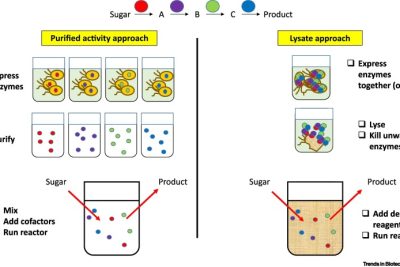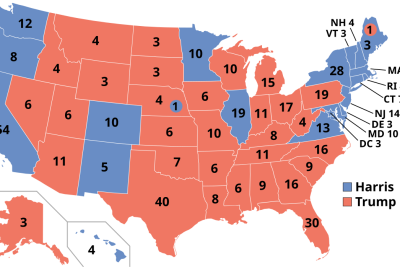
McCarthy: Biography, Facts, and Impact on American History

John McCarthy was not only a visionary but also a defining force in the realm of artificial intelligence (AI). His pioneering efforts laid the groundwork for AI as we know it today, influencing countless developments in technology and theory. McCarthy's work and ideas have forever changed how we interact with machines, making him a fundamental figure in American history who deserves recognition and respect.
Born in 1927, McCarthy became a leading expert in the field, credited with coining the term "artificial intelligence" in 1955. His contributions extend from the early conceptualization of AI to practical implementations such as the development of the LISP programming language, which remains relevant in coding circles today. This article dives deeply into McCarthy's life, exploring his biography, his contributions to AI, and the lasting impact he has had on American history.
Early Life and Education
John McCarthy was born on September 4, 1927, in Boston, Massachusetts. Growing up, he displayed a keen interest in mathematics and science, subjects that would shape his future endeavors. His family relocated to Los Angeles when he was young, and it was here that McCarthy's education truly took off. He attended the prestigious California Institute of Technology (Caltech), where he pursued a degree in mathematics. After graduating in 1948, he decided to further his educational journey by enrolling in Princeton University, where he earned his doctorate in mathematics in 1951.
McCarthy's academic prowess earned him a reputation among his peers, and he briefly taught at Princeton, fostering the next generation of scientists while continuing to advance his own research. His early experiences in academia would later influence his role in establishing institutional frameworks for various AI initiatives.
Academic Career
Following his time at Princeton, McCarthy's academic career flourished as he took on positions at several prestigious institutions. He held faculty appointments at Dartmouth College and the Massachusetts Institute of Technology (MIT). His time at Dartmouth was significant, as it laid the foundations for the Dartmouth Conference of 1956, often credited as the birthplace of artificial intelligence as a formal field of study. Here, McCarthy and his contemporaries began to cultivate discussions and research that would lead to the field of AI's rapid development.
At MIT, McCarthy continued to explore human and machine cognition, contributing to foundational theories that informed the direction of AI research. His integration into the academic fabric of these renowned institutions enriched his knowledge and emboldened his vision for technology. Despite being a prominent figure in academia, McCarthy sought avenues that extended beyond the classroom, leading to his groundbreaking work in AI.
Contributions to Artificial Intelligence
John McCarthy's contributions to artificial intelligence are monumental and multifaceted. He was a pioneer who sought to understand and replicate human cognitive functions through machine learning and logic. One of his most significant achievements was the formalization of commonsense knowledge, enabling machines to make inferences based on everyday human reasoning. This concept has since become integral to AI development, influencing how systems process and understand information.
In addition to his theoretical contributions, McCarthy also worked on developing practical applications for AI. He proposed algorithms for problem-solving and reasoning, which laid the groundwork for advancing machine intelligence. These contributions fostered an environment ripe for innovation and experimentation, leading to breakthroughs that propelled AI into a new era.
Coining of the Term "Artificial Intelligence"
One of John McCarthy's most notable achievements was coining the term "artificial intelligence" in 1955. This moment marked the formalization of AI as a distinct area of study that would attract scholars and practitioners alike. During the Dartmouth Conference held in 1956, where McCarthy collaborated with other pioneering thinkers, the concept of AI garnered interest from various disciplines, stimulating research that had far-reaching implications.
The framing of AI as a scientific discipline was crucial for its acceptance in academia and industry. McCarthy's foresight and intellectual leadership at the Dartmouth Conference facilitated a platform where concepts surrounding machine learning, robotics, and intelligent systems were discussed and developed. The resulting excitement around the term "artificial intelligence" sparked innovation and led to a surge of research funding, enabling scientists to pursue groundbreaking work.
Creation of the LISP Programming Language
In 1958, John McCarthy developed LISP, one of the earliest programming languages specifically designed for artificial intelligence applications. LISP, which stands for "LISt Processing," was innovative in its ability to manipulate symbolic data, forming the backbone of many early AI developments. Its flexible architecture allowed programmers to express their ideas in ways that were previously impossible.
McCarthy's creation of LISP provided a platform for AI researchers to implement and test their theories, making it the programming language of choice for a generation of computer scientists. LISP's functional capabilities enabled the development of numerous AI applications, including natural language processing systems and games. Despite experiencing declining popularity in the 1990s, LISP has seen a resurgence in the 21st century, particularly among open-source developers who appreciate its elegance and effectiveness.
Legacy and Impact on AI
John McCarthy's legacy in artificial intelligence is profound and far-reaching. His vision and contributions have shaped the development of AI, earning him a place among the most influential figures in the field. His work has not only transformed academic thought but has also influenced the way technology integrates into daily life.
McCarthy's emphasis on the importance of commonsense reasoning and symbolic processing has guided ongoing research and remains a focal point in creating more sophisticated AI systems. Additionally, his creation of LISP has provided a foundation on which many modern programming languages have been built. Today, LISP is still utilized in various AI projects, showcasing McCarthy's lasting impact on the industry.
Awards and Honors
Over the course of his life, John McCarthy received numerous awards and honors that recognized his contributions to science and technology. Notably, he was awarded the A.M. Turing Award in 1971 for his significant work in AI, often likened to the Nobel Prize for computing. This honor was a testament to his influence in shaping the landscape of AI research.
Additionally, McCarthy was honored with the National Medal of Science in 1990, further solidifying his status as a major contributor to American science and technology. These accolades reflect not only his individual achievements but also the respect and admiration he garnered from his peers and the scientific community.
Later Years and Death
In his later years, McCarthy continued to engage with the field of artificial intelligence, participating in research and advocating for its potential. Until his retirement, he taught at Stanford University, where he had founded the Stanford Artificial Intelligence Lab, nurturing the next generation of scientists and technologists. His enthusiasm for AI never waned, and he remained a vocal supporter of its application in solving real-world problems.
John McCarthy passed away on October 24, 2011, leaving behind a rich legacy of innovation and thought leadership in the field of artificial intelligence. His contributions have shaped the way we think about and engage with machines, earning him an indelible place in history. As AI continues to evolve, McCarthy's ideas and principles endure, holding relevance in this rapidly changing landscape.
Conclusion
John McCarthy's journey from an inquisitive child in Boston to a towering figure in the field of artificial intelligence is a testament to his intellectual curiosity and innovative spirit. Through his groundbreaking work, he not only formalized the discipline of AI but also created fundamental tools and theories that continue to influence the field today. McCarthy's legacy is a powerful reminder of how one individual's vision can transform an entire discipline, leaving an indelible mark on the fabric of American history and beyond. As we move forward into the future of technology, McCarthy's contributions will always be a foundational pillar that guides the ongoing exploration of artificial intelligence.
Did you find this article helpful? McCarthy: Biography, Facts, and Impact on American History See more here Education.
Leave a Reply






Related posts